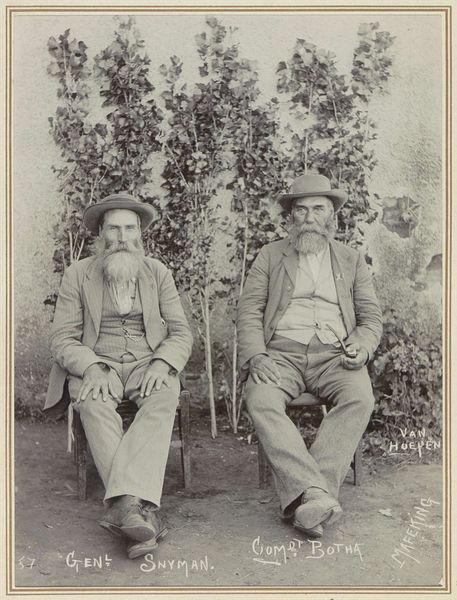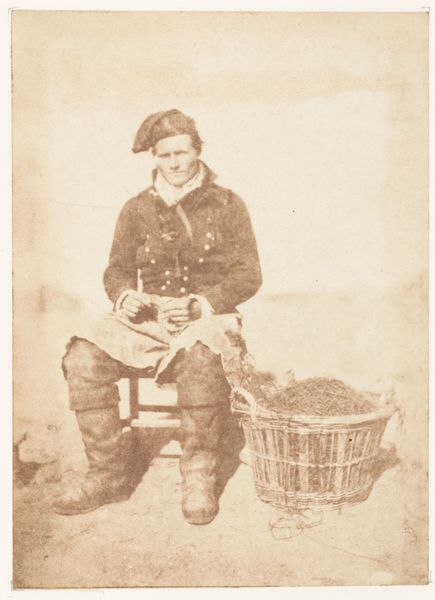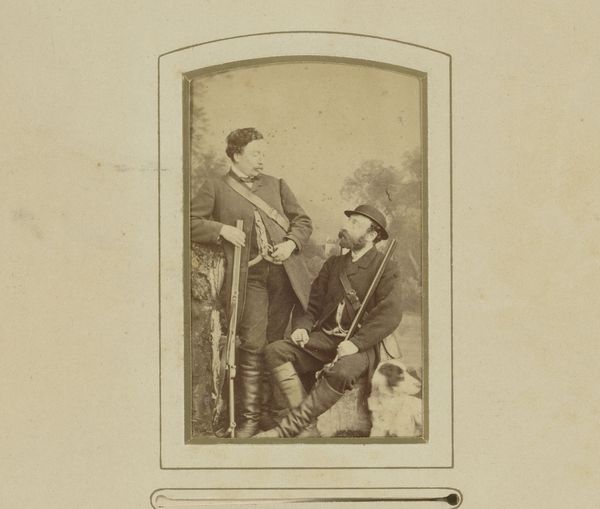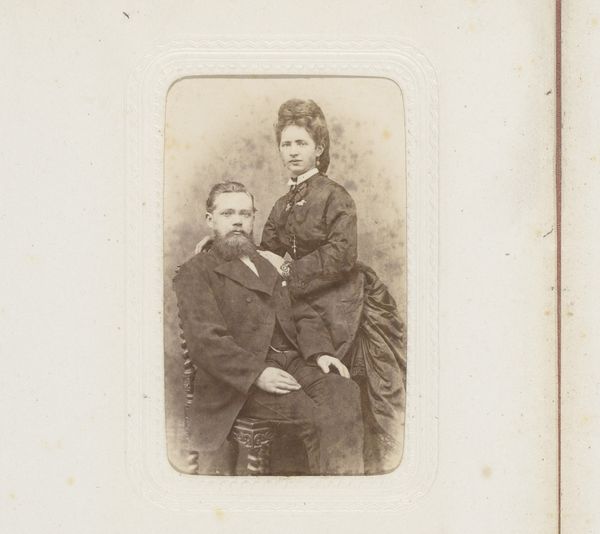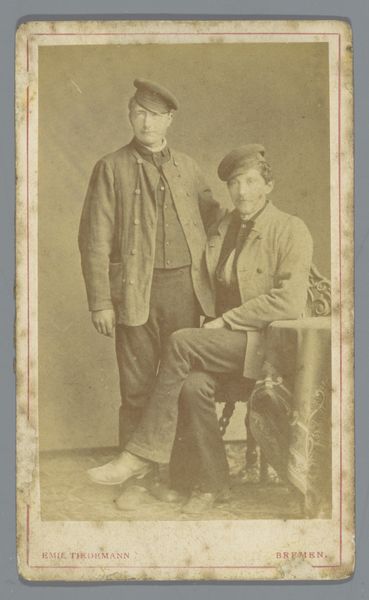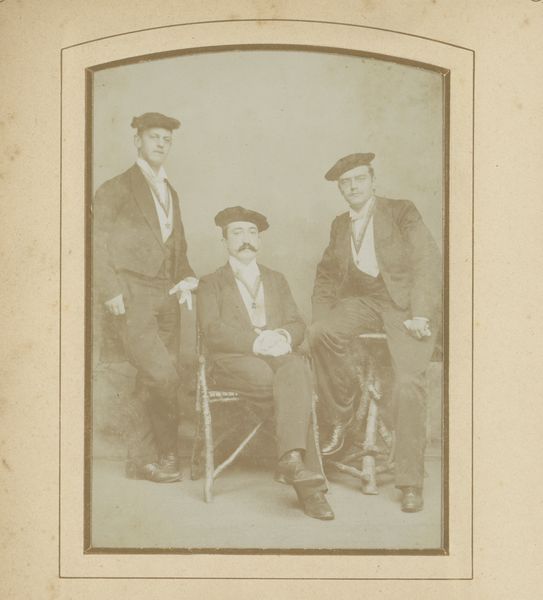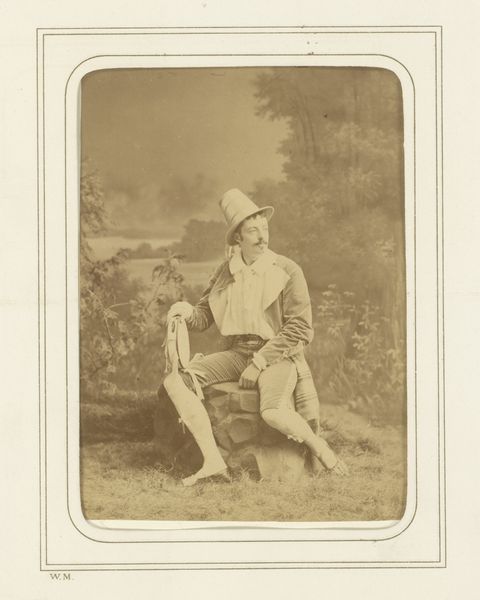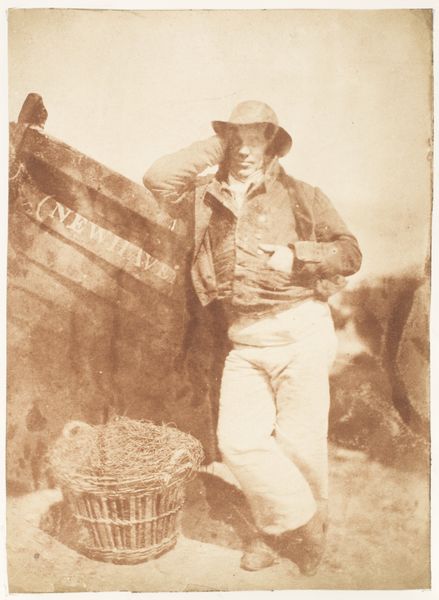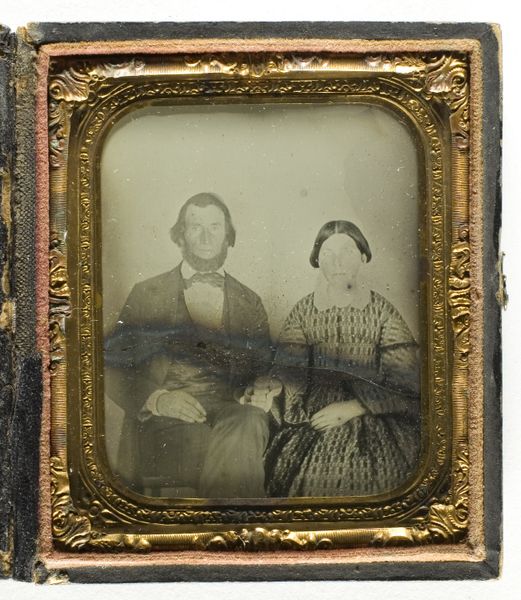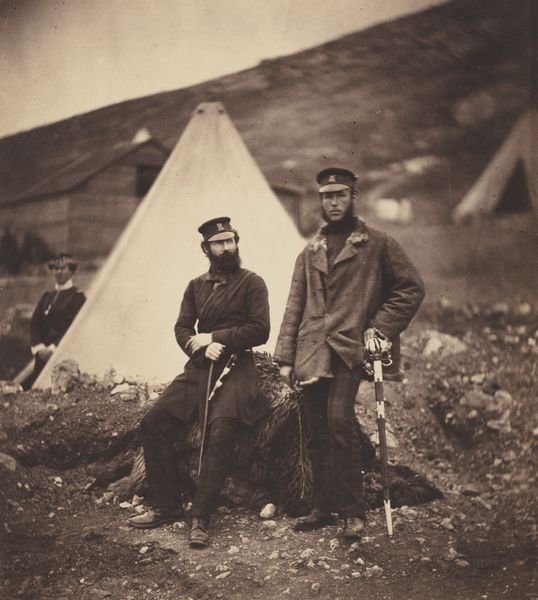
photography, gelatin-silver-print
#
portrait
#
16_19th-century
#
photography
#
historical photography
#
gelatin-silver-print
#
19th century
#
men
#
genre-painting
#
realism
Copyright: Public Domain
Curator: Today, we’re looking at “Newhaven Fishermen,” a gelatin-silver print by Hill and Adamson, made between 1843 and 1847. Editor: It’s quite striking, isn't it? The texture in the photograph itself lends a kind of raw realism to the figures. A real sense of the weight of their lives. Curator: Absolutely. The tonal range here is subtle but precise. Look at how the light defines the forms, creating a delicate balance between shadow and illumination across their faces and clothing. It's masterful use of the early photographic medium, capturing depth with limited resources. Editor: I’m drawn to their weathered faces, their posture, their clothing - rugged but neat. They're archetypes, in a sense, embodiments of the stoic fisherman, facing harsh elements. Notice the man with the pipe – a signifier of labor and masculine identity? Curator: An excellent observation. Considering the photographic technology of the time, posing and composition became key. The positioning of the subjects within the frame, their subtle variations in gaze, establishes a compelling structural relationship, suggesting a bond of solidarity or camaraderie. Editor: And perhaps vulnerability? Their proximity speaks volumes, given that these are working-class men, not typically represented in formal portraiture at the time. They stand as a representation, becoming symbols of a specific cultural group. The basket also. A potent representation of a tool they might use. Curator: Agreed. The arrangement, while seemingly casual, is meticulously calculated. This use of realism marks a decisive move away from idealized representation towards a more genuine depiction of labor and class. The formal structure conveys their shared history. Editor: Knowing that these fishermen may not have had a voice within societal representation adds complexity. This portrait then transcends simple image making and rises to a profound reflection of community identity. A historical marker of labor, resilience, and unity captured within the emulsion of a photograph. Curator: Precisely. We can appreciate not only its aesthetic merits, but its groundbreaking contribution to representing society outside of aristocracy within art history. Editor: A very compelling study through light and image.
Comments
No comments
Be the first to comment and join the conversation on the ultimate creative platform.
